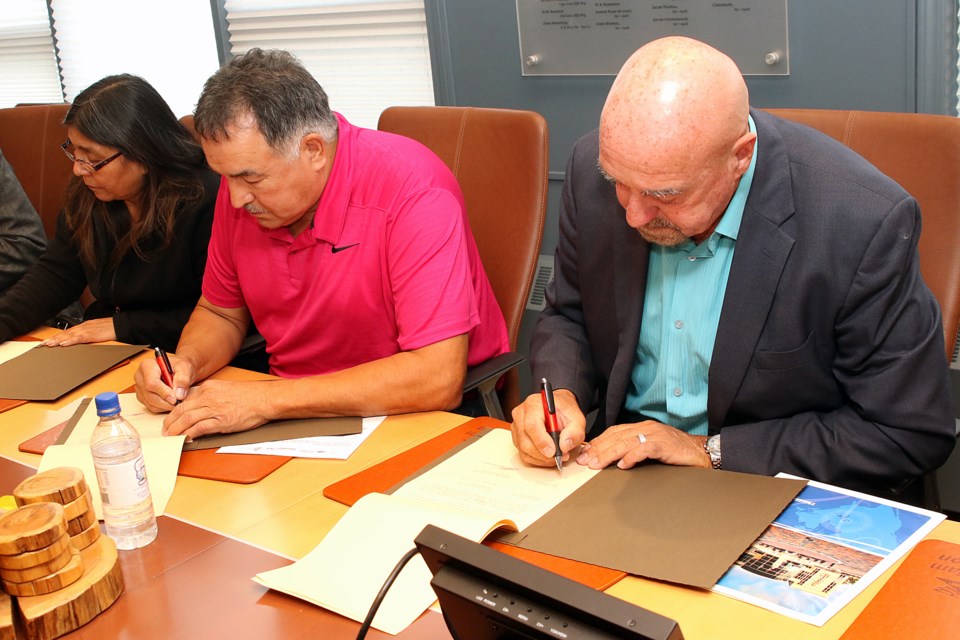FORT WILLIAM FIRST NATION – North Caribou Lake First Nation Chief Dinah Kanate says she’s hopeful a historic friendship agreement signed Friday with the City of Thunder Bay, Thunder Bay Police Service and Fort William First Nation will help bring all four groups together in the name of safety.
“It’s a first of its kind,” Kanate said after inking her name on the agreement, which calls for co-operation between the three signatories in a variety of areas, including public safety, anti-racism, education, social and cultural awareness and community development.
“Everything is a work in progress.”
Kanate’s inspiration arose out of tragedy, when earlier this year 17-year-old Tammy Keeash was found dead in a local waterway, the first of two teens to die in such a fashion, the second being 14-year-old Josiah Begg.
Finding a safe haven in Thunder Bay is of utmost importance to her people, especially North Caribou Lake First Nation’s youth. Kanate, who knew Keeash well, said leaving home at such a young age comes with enough peril of its own, while recalling her own journey as a 13-year-old.
“That’s a scary experience and as a child you have to right away become an adult,” Kanate said.
With Fort William First Nation leadership opening their community and offering to allow youth from afar to maintain their traditional ways far from home, along with commitments from both the city and its police department to work toward better safety for Indigenous students, Kanate said her own community will also take steps to protect their youth.
“We don’t teach them what to expect when they come out here,” she said.
Coun. Brian McKinnon was one of four signatories to the agreement, along with Kanate, Fort William First Nation Chief Peter Collins and Mayor Keith Hobbs.
He said is the first step of what he hopes is a very long journey toward prosperity for all Northern Ontario First Nation communities.
“I think what it will do is allow us to focus our energies. Now we have a very specific community and we can start some very specific things going,” McKinnon said.
“It’s difficult to address all of the needs of all of the (communities), but now we start with one and I think it’s going to be a template and it’s going to be a trend-setting thing that’s going to be beneficial to both groups.”
He’s also realistic.
No agreement alone will put an end to the tragic incidents – the latest of which saw 21-year-old Dylan Moonias apparently drown in the Neebing-McIntyre Floodway.
“If I had the answer to that,” he said, his voice trailing off. “That’s clearly the reason we’re doing this. We want to avoid those tragedies at all costs. And if we have the key partners working together, we can’t just let these kids come to a city like this without help.
“Now we’re going to make sure we very specifically offer programs, offer mentors – and that’s where Fort William First Nation has really stepped up to the plate,” McKinnon said.
Collins said he sees it as Fort William First Nation’s responsibility to become part of the solution.
“It has been a long time coming, for sure. One of the things that we’re trying to tell all the communities that migrate from the north, that we’re your partner, we’re friends. We have to work together to try to keep our communities healthy, in partnership with each other,” Collins said.
